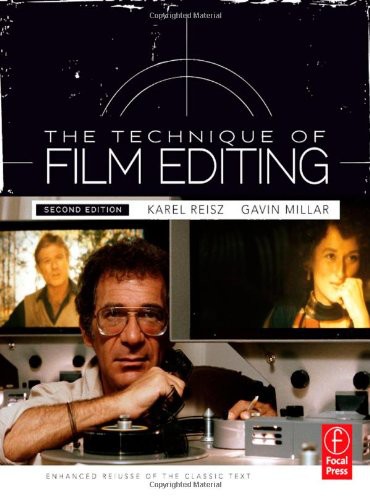

Most ebook files are in PDF format, so you can easily read them using various software such as Foxit Reader or directly on the Google Chrome browser.
Some ebook files are released by publishers in other formats such as .awz, .mobi, .epub, .fb2, etc. You may need to install specific software to read these formats on mobile/PC, such as Calibre.
Please read the tutorial at this link: https://ebookbell.com/faq
We offer FREE conversion to the popular formats you request; however, this may take some time. Therefore, right after payment, please email us, and we will try to provide the service as quickly as possible.
For some exceptional file formats or broken links (if any), please refrain from opening any disputes. Instead, email us first, and we will try to assist within a maximum of 6 hours.
EbookBell Team

4.7
16 reviewsThank goodness this classic book has come back into print! Though The Technique of Film Editing has not been revised since 1968, it is still the single most comprehensive and engaging volume on film editing. Karel Reisz and Gavin Millar introduce readers to every aspect of the editor's craft. They provide a concise history of editing and describe editing style as it applies to every genre of moviemaking, including the many types of narrative and documentary films. The particular demands of wide-screen filmmaking, cinema vérité, and the avant-garde are also covered. Reisz and Millar's account of the differences between smooth and abrupt editing and their remarkable sense of editing for dramatic effect rather than for realism make this book an essential for apprentice editors, as well as for those who want to know how filmmakers understand their work. -- Dieser Text bezieht sich auf eine andere Ausgabe: Taschenbuch .
KurzbeschreibungThe Enhanced version of the seminal text on editing includes a new foreword, a new afterword, a revamped cover and layout, as well as a lower price! It is the single most comprehensive and engaging volume on film editing. Reisz and Millar introduce readers to every aspect of the editor's craft, providing a concise history of editing and describing editing style as it applies to every genre of moviemaking, including many types of narrative and documentary films. The particular demands of wide-screen filmmaking, cinema verite, and the avant-garde are also covered. Reisz and Millar's account of the differences between smooth and abrupt editing and their remarkable sense of editing for dramatic effect rather than for realism make this book essential for apprentice editors, as well as those who want to know how filmmakers understand their work. It features a new foreword and a new afterword. New layout features wider trim for easier readability and more ideal figure placement, while sidebars and tips call-outs provide quick-access to key concepts and ideas. It is an enhanced version and at a lower price.